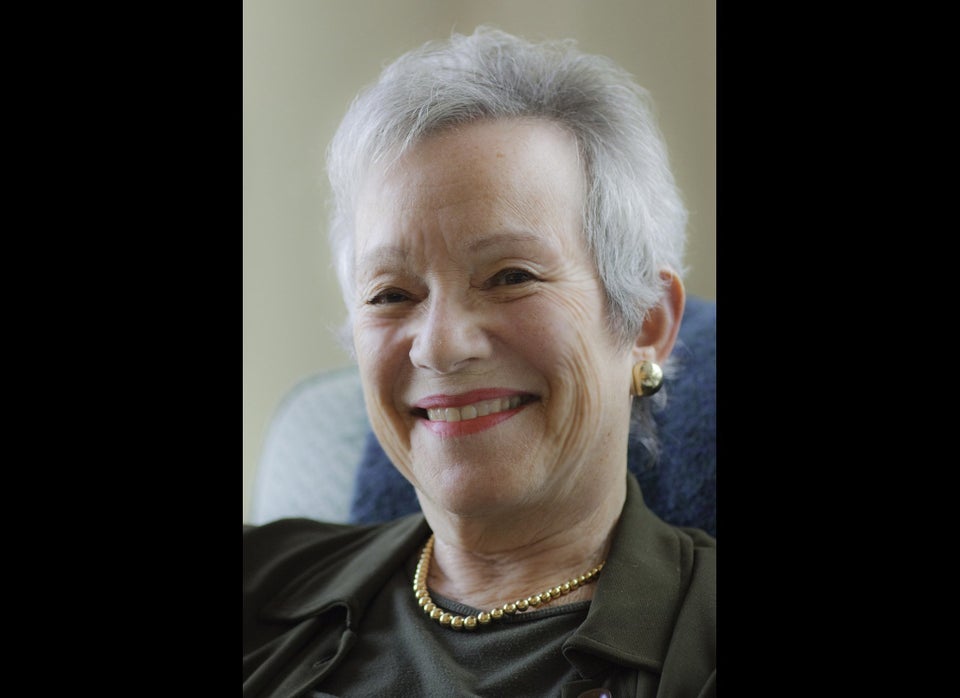
On May 11, 1921, a petite 53-year-old mother of two stepped onto the deck of the RMS Olympic after it pulled into New York Harbor and was mobbed by reporters and photographers in the same way Jennifer Lawrence would be on Oscar night in 2013.
Everyone had turned out to catch a glimpse of the biggest celebrity at that time as she embarked on her first tour of the United States -- Madame Marie Curie.
Curie had captured the public's imagination as a woman who had risen up from a modest Polish family to become the first person honored with two Nobel Prizes. Under her personal direction, the world's first experiments in treating neoplasms -- or tumors -- with radioactive isotopes were completed. After her husband Pierre was killed instantly when he was run over by a horse-drawn carriage in 1906, she raised two extraordinary daughters on her own. Irene went on to win her own Nobel Prize and Eve became a celebrated author and war correspondent.
It's no wonder the world's young women -- and men -- looked up to Madame Curie.
So -- as we celebrate Women's History Month in March -- who do young women look up to today? When I ask my 12-year-old daughter who she's most inspired by, she usually says Taylor Swift. Certainly there are worse role models. After all, Swift writes much of her own music and was named one of the 10 best-mannered celebrities in 2012.
Celebrities in the United States typically include singers and film stars and sports heroes. They also usually include people like Kim Kardashian who are simply famous for being famous. But -- once upon a time -- scientists used to be celebrities as well. And that's what needs to happen again today if we want to encourage more girls to go into STEM fields -- science, technology, engineering and math.
In the United States, high school girls still make up less than 20 percent of computer science Advanced Placement (AP) test takers. And women still make up only 27 percent of those earning math PhDs. The same percentage -- 27 percent -- of people with careers in STEM fields are women. Just 30 percent of STEM college professors are women.
A recent American Association of University Women study looked into the gender gap, determining that girls and boys in elementary school take math and science courses in roughly the same numbers, and that about as many girls as boys leave high school set to pursue science and engineering majors in college. Yet, in the end, fewer women than men actually wind up pursuing these majors.
"Among first-year college students, women are much less likely than men to say that they intend to major in science, technology, engineering, or math (STEM)," the study said. "By graduation, men outnumber women in nearly every science and engineering field, and in some, such as physics, engineering and computer science, the difference is dramatic, with women earning only 20 percent of bachelor's degrees. Women's representation in science and engineering declines further at the graduate level and yet again in the transition to the workplace."
The study not only cited a lack of women role models but also claimed that subtle references to gender stereotypes -- whether on the playground or on TV -- have been shown to negatively impact a girl's science and math performance. Fortunately research also shows that society has the ability to counter these stereotypes by trumpeting the accomplishments of girls and women in science and math the same way we do Beyonce's.
And there are plenty of role models out there. It's just that no one knows much about them.
In 2009 alone, three women captured the Nobel Prize in the sciences including Australian-born American molecular biologist and biochemist Elizabeth Blackburn and American molecular biologist Carol Greider for Physiology or Medicine (who lost her mother when she was only in the first grade), and Israeli protein crystallographer Ada Yonath for Chemistry.
This message of trying to get more girls interested in science and math is not a new one. But with women still not entering scientific fields at the same rate as men, it's one that must be drilled into people's heads again and again. We must find a way to make STEM subjects seem more interesting. Just look at how the media portrays these fields. "The Big Bang Theory," for example, is about a group of highly intelligent -- but socially inept -- male characters. And, most importantly, we must highlight and celebrate women scientists who could be emulated by young girls and who could send the message that girls and boys are equals.
As Marie Curie herself once said: "Life is not easy for any of us. But what of that? We must have perseverance and above all confidence in ourselves. We must believe that we are gifted for something, and that this thing, at whatever cost, must be attained."
Shelley Emling is the author of "Marie Curie and Her Daughters: The Private Lives of Science's First Family" published in 2012 by Palgrave Macmillan.
Earlier on Huff/Post50:

